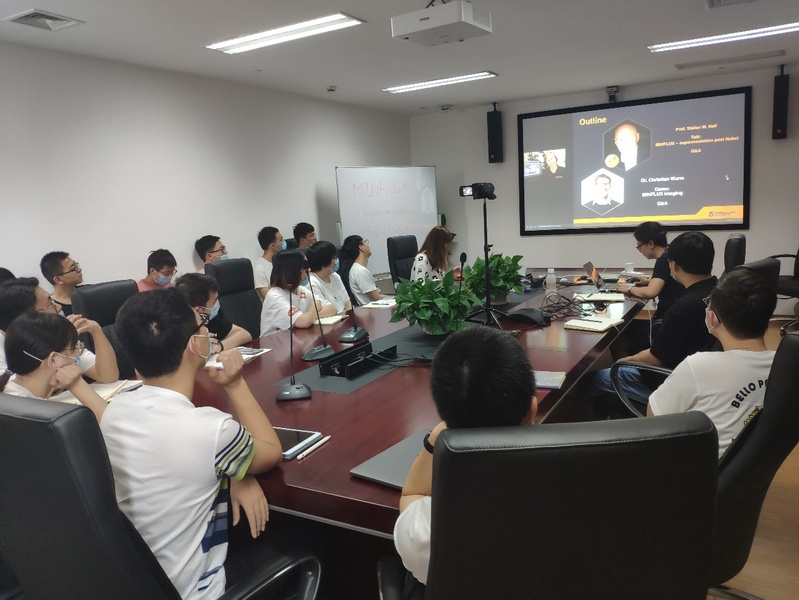Stefan W. Hell, 2014 Nobel Prize winner, delivered a report on MINFLUX recently . The faculty and the students of the Centre for Artificial-Intelligence Nanophotonics attendedthe online speech,as one of Coffee Time Series held by Centre for Artificial-Intelligence Nanophotonics. This activity was presided over by Dr. Wang Yangyundou,
In his report, Stefan explained the main working principle of MINFLUX. MINFLUX is a kind of super-resolution fluorescence microscopy technology. It combines two technologies: STED (by adding a doughnut shaped loss light on the periphery of the traditional excitation light to greatly reduce the actual excitation area to achieve super-resolution imaging) and single molecule positioning microscope (using random fluorescent molecules, and then achieving super-resolution through Gaussian fitting positioning).Therefore, MINFLUX can light up fluorescent molecules randomly in a small area, and then precisely locate them through a doughnut shaped laser.
Brief introduction of the reporter:
Stefan Walter Hell is a German physicist and director of the Max Planck Institute for Biophysical Chemistry. He has made major achievements in super resolution microscopy. He is the first man who proposed the principle of super resolution imaging of stimulated emission loss beyond the optical diffraction limit, and it has been successfully verified on instruments. He has published more than 400 papers in peer-viewed journals such as Nature, Science, Nature Method and PNAS, and won more than 30 internationally-renowned awards, including Leibniz Prize (2008), The Lower Saxony State Award (2008), the Oto-Hahn-Prize in Physics (2009) and the Kavli Prize (2014). Hewon 2014 Nobel Prize in Chemistry, together with Eric Beziger and William Moner for his work in super resolved fluorescence microscopy. The Centre for Artificial-Intelligence Nanophotonics has collaborations with Stefan W. Hell in relevant fields.
